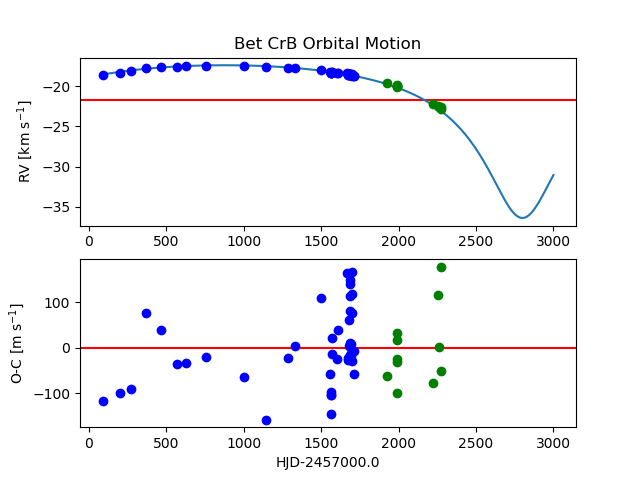Some news on Neo-Narval data
We summarize here the last evolution of the instrument & DRS
(NB: at every major improvment, all data taken with Neo-Narval is being re-analysed with DRS).
- 2021, March 28: Equivalent width of solar spectrum: below is the ratio of the equivalent widths of the solar spectrum measured on the Moon with Neo-Narval (EWs) to the reference solar equivalent widths measured at Kitt Peak Solar tower (EWref), against walengths. This shows that the absorption line extraction works fine with the new DRS

- Wavelength calibration: dispersion polynomial, absolute error of the dispersion polynomial at the center of each order:

- 2021, March 11: the last DRS version has been installed on cloned computers; the re-reduction of all Neo-Narval data will now start on the 2019B, 2020A, 2020B data. Once finished, PIs will be able to retrieve their data.
- The DRS is always improving, and once a version is stable, all the data will be processed and the PIs aware of that.
- 2021; March 7: the DRS is corrected from the wavelength correction bug; the following figure shows the orbital motion of beta Crb together with their O-C residuals (blue: Narval; green: Neo-Narval):

2020, October 15: the (new) Fabry-Perot is in operation. Some tests have shown a contamination of « sky » channels by this third one. This should be fixed, but so far no observation for PIs are using the Fabry-Perot; tests on calibration stars are still being performed. Good news is that the Fabry-Perot can follow the motion with the requested precision of 3m/s.The DRS is in constant evolution; for instance, the flat correction is now much better. However, some problems remain:
- the velocity is not well corrected since 2021, February 13, but also in 2020 May. The figure represents the heliocentric velocity curve of the star beta CrB obtained by Narval (blue points), Neo-Narval (green points) together with the binary hypothesis (solid line):

- the magnetic field seems correct, but sometimes the N signals are large. The figure represents at the top the magnetic field (phases along the rotation period) of the star beta CrB obtained by Narval (blue points), and Neo-Narval (green points); the bottom figure corresponds to the N signal:

- the N signals have a relatively large amplitude for low magnetic field stars, such as the giant Pollux; The solid line represents the Stokes-V polarization signal, the dashed lines represent both N1 and N2 null signals:

- 2020, February 18: ST3 data are provided in the observatory frame, the heliocentric correction being given in the fits header (keyword: BERV). The provided BERV values are wrong prior to this date, correct after; bug fixed.


